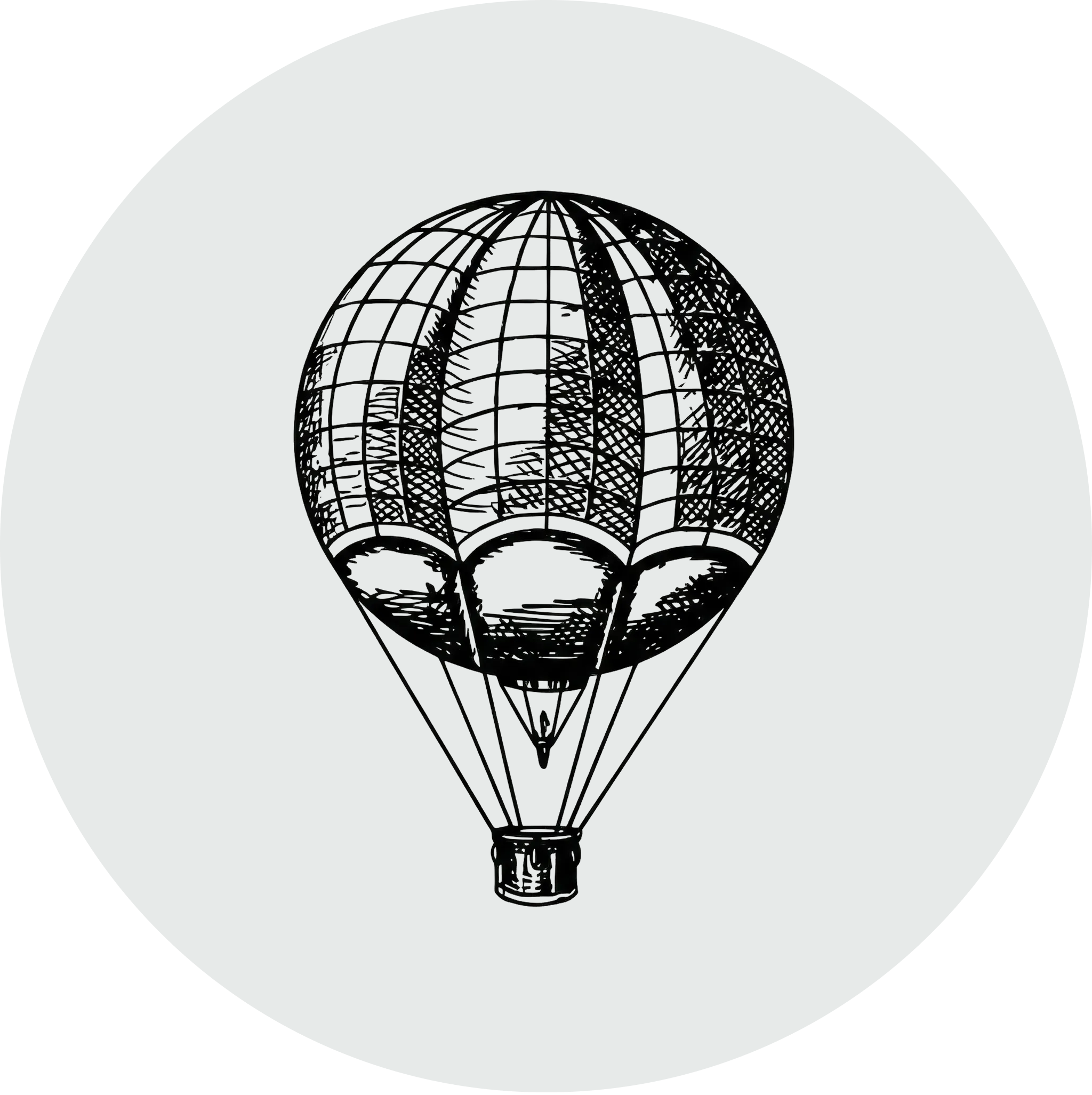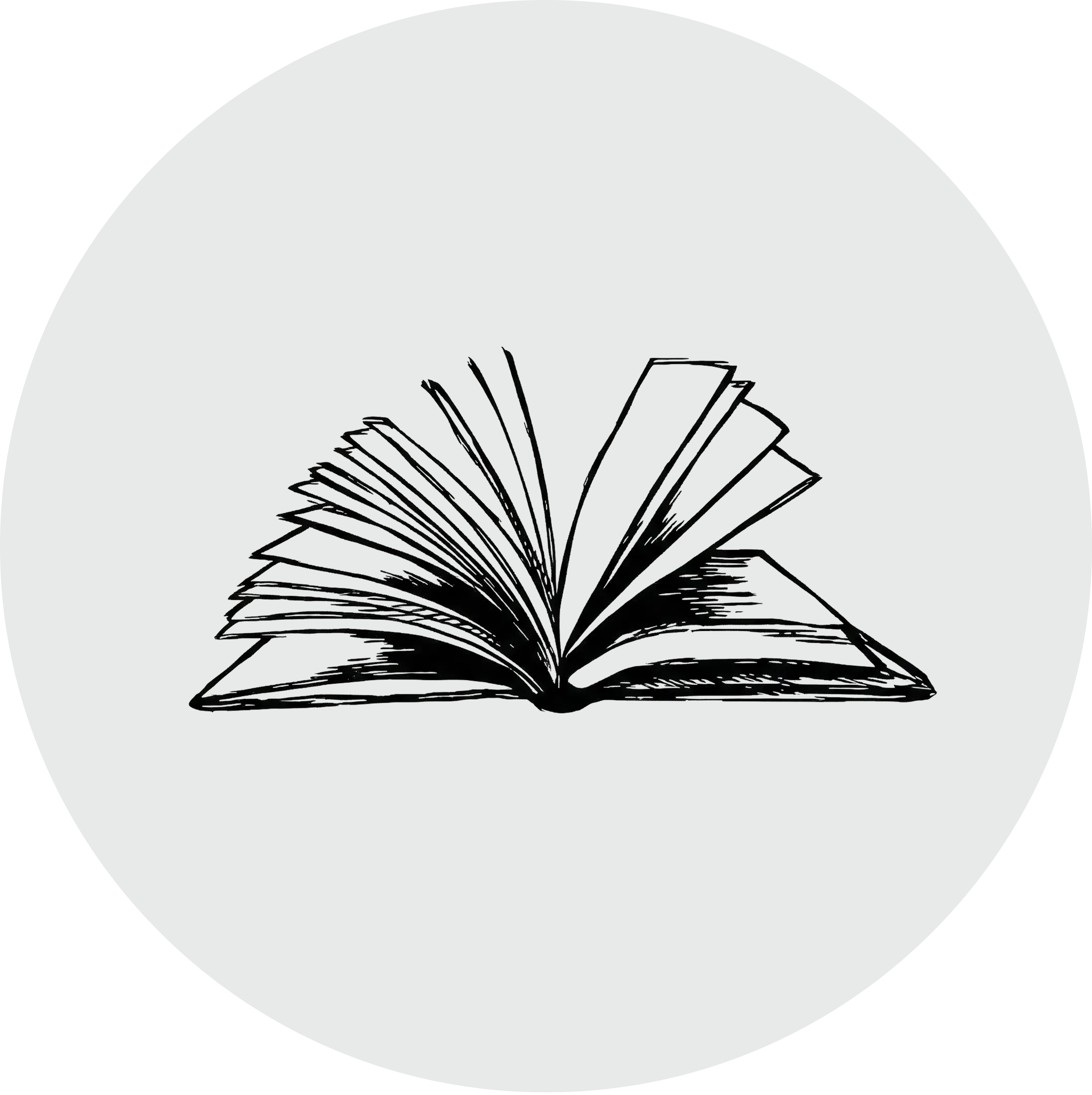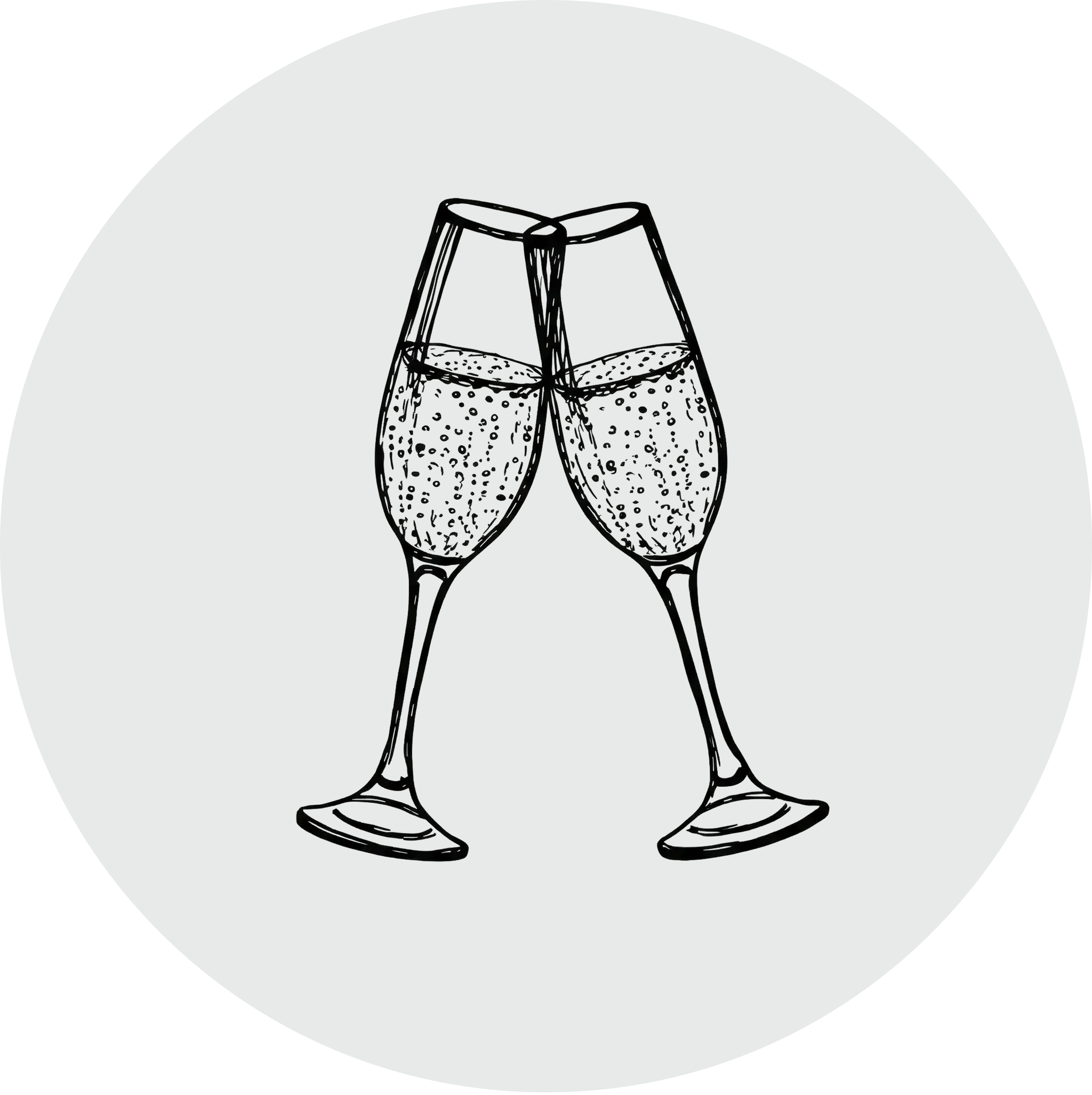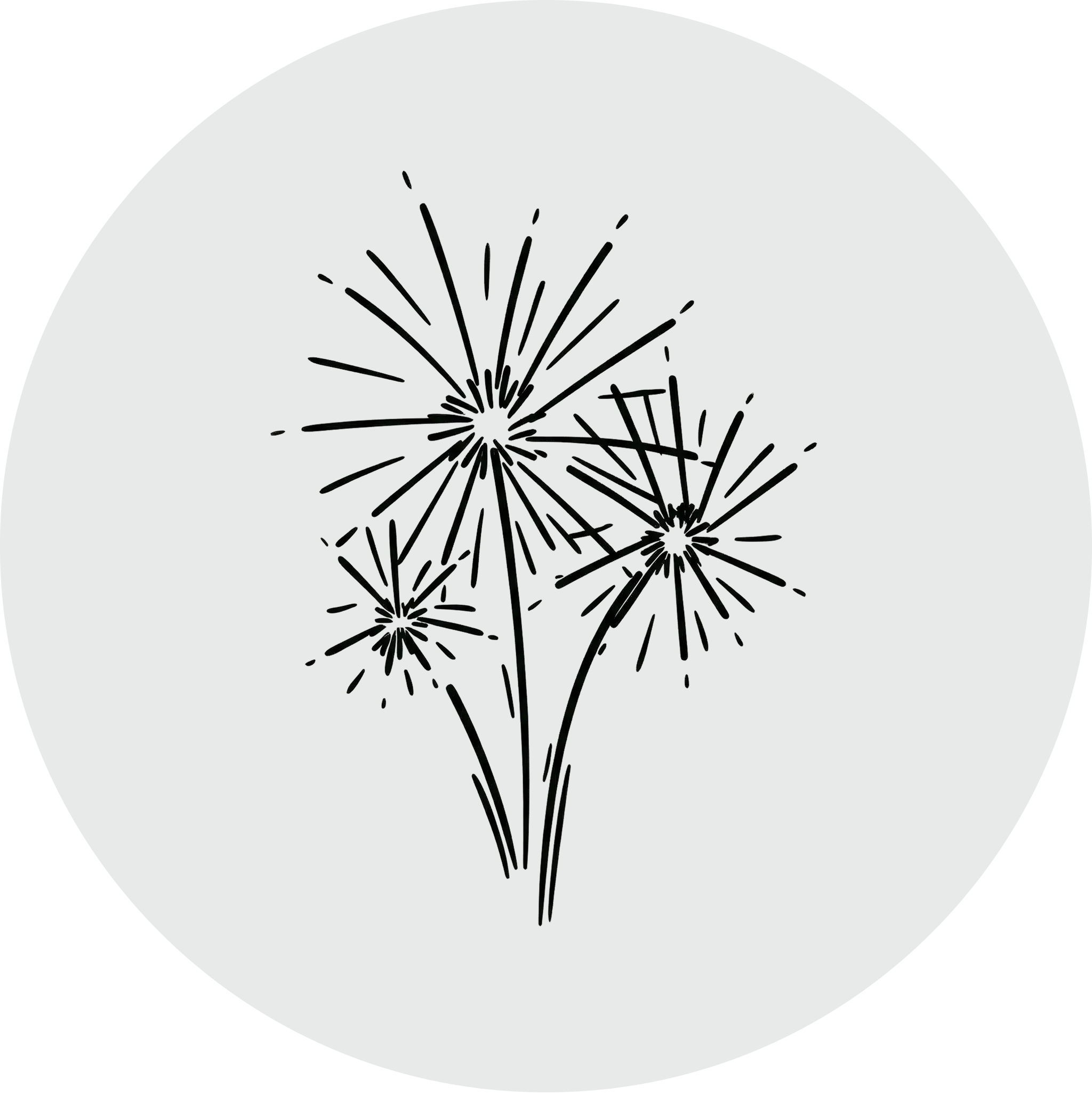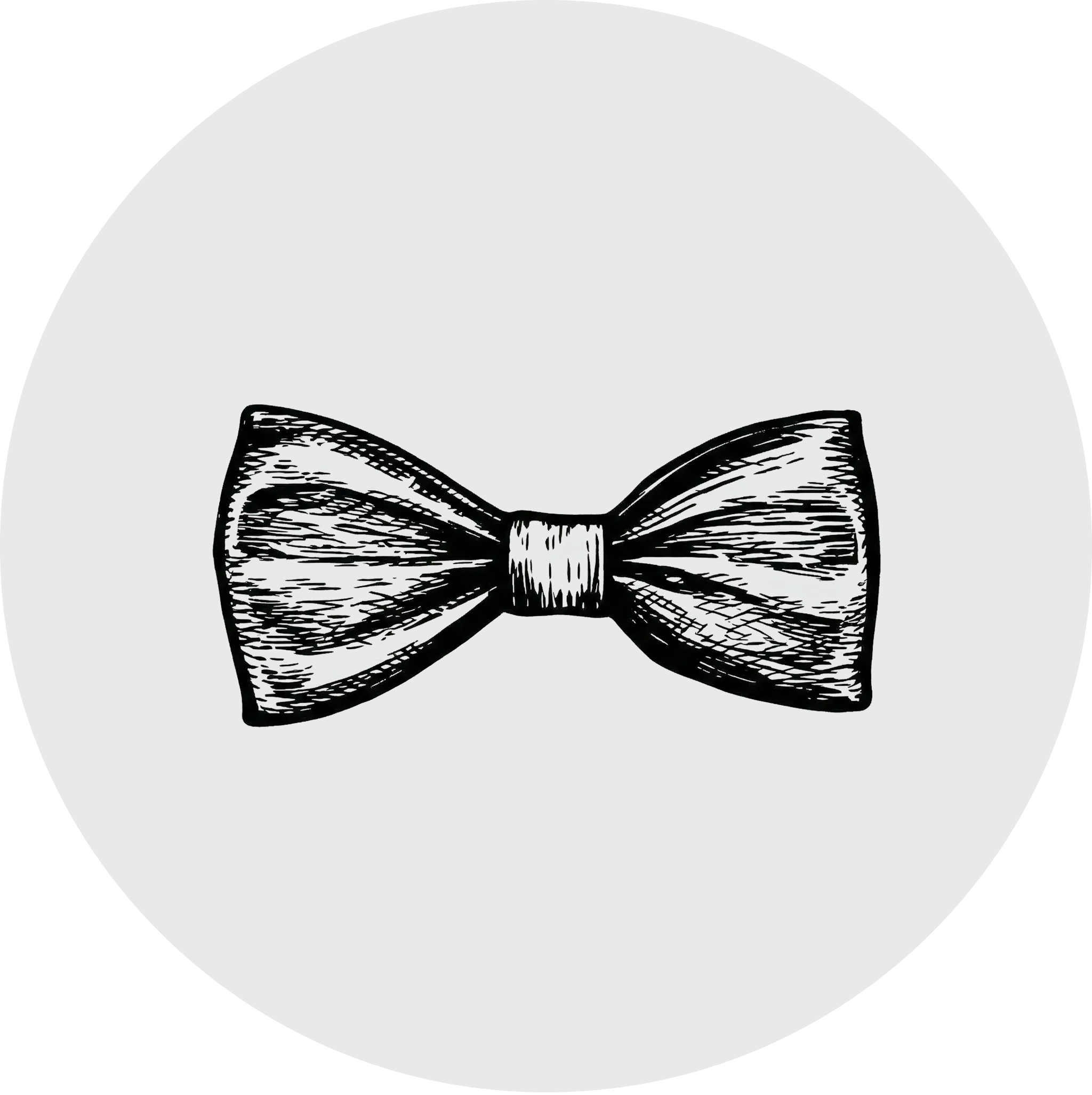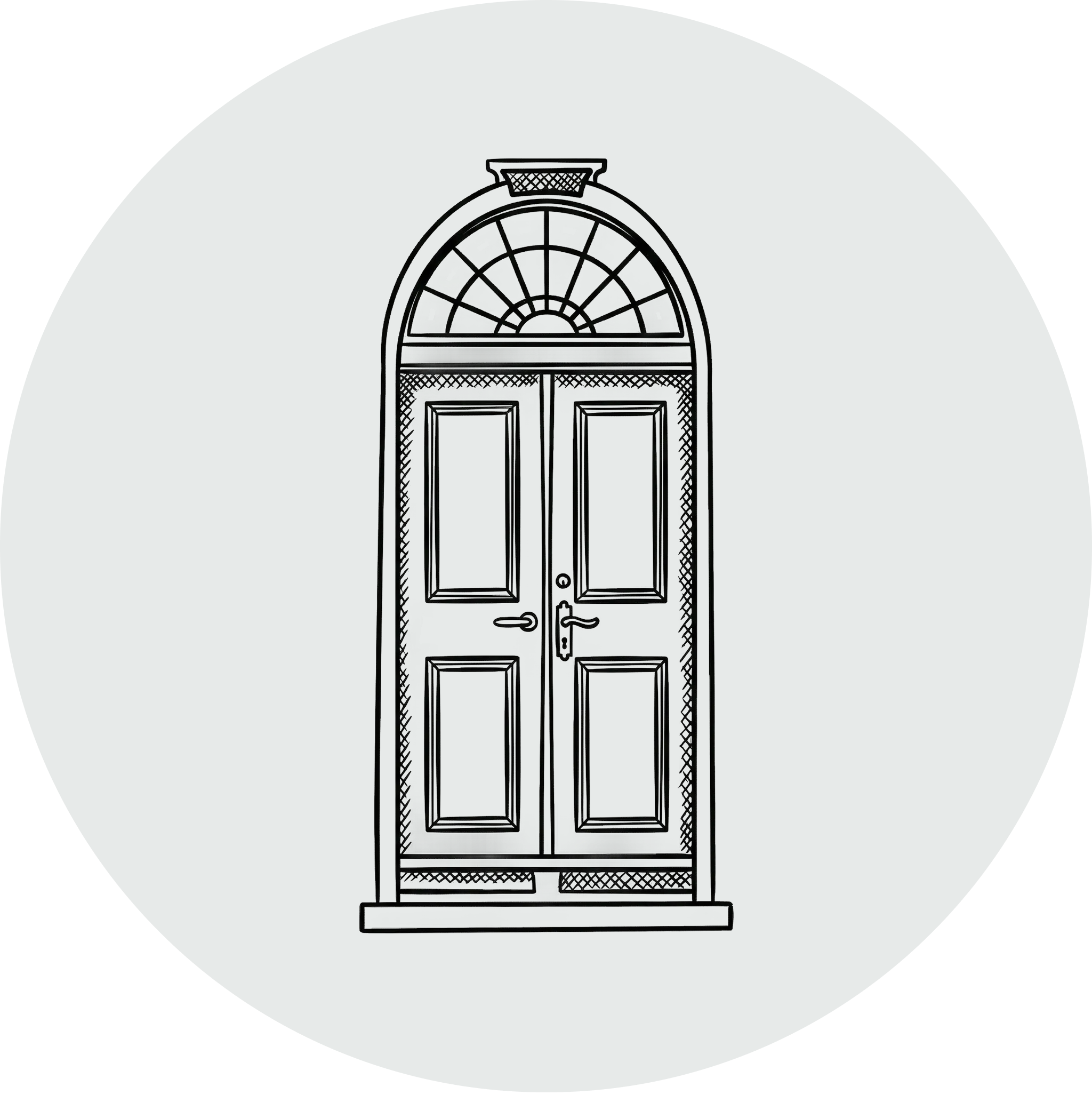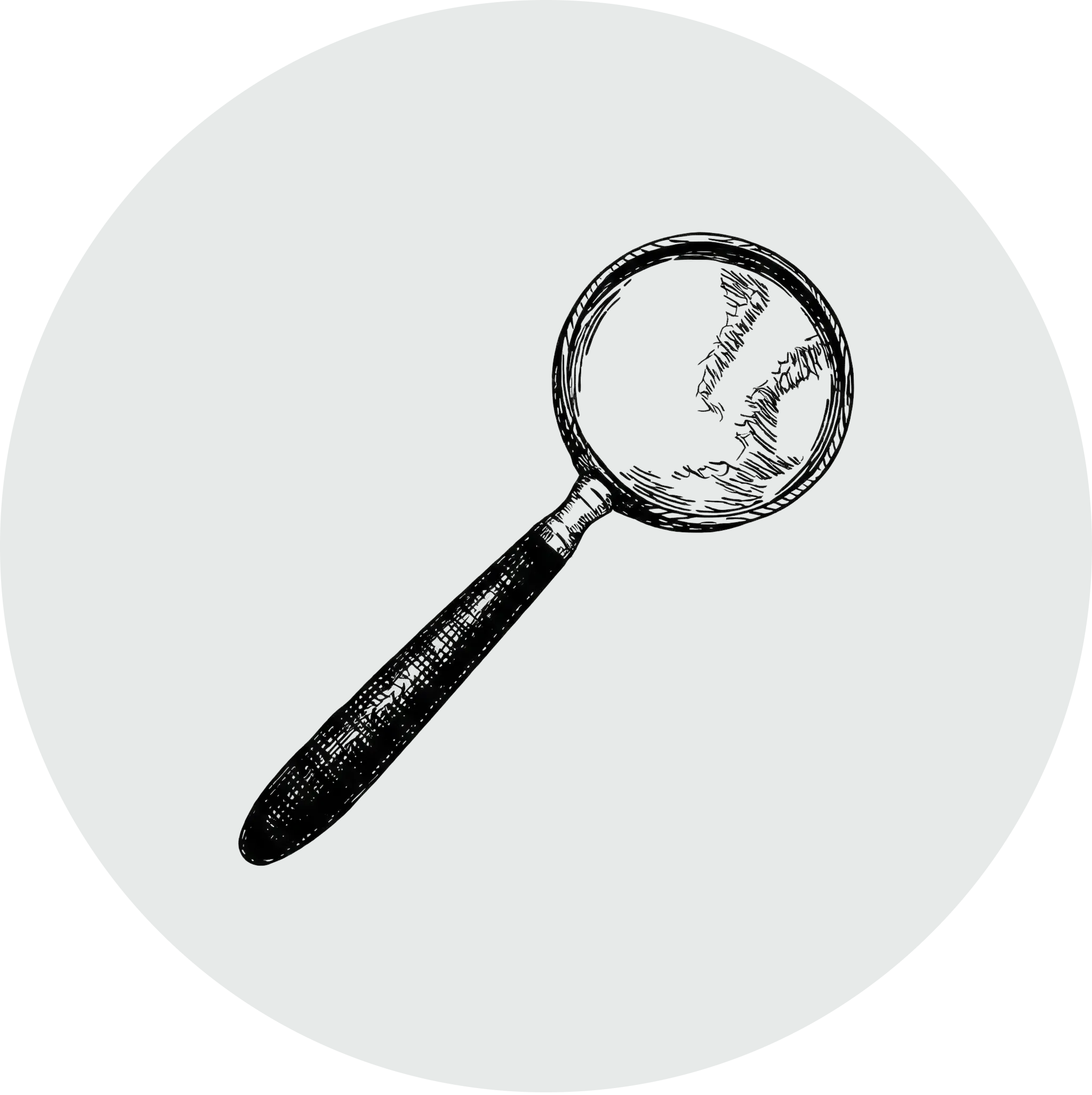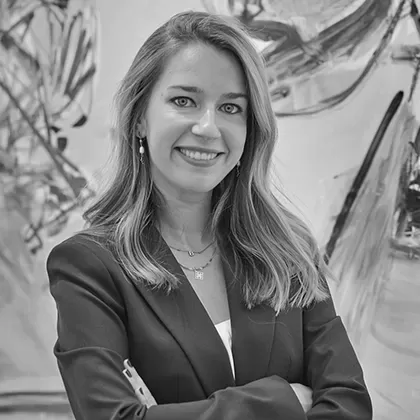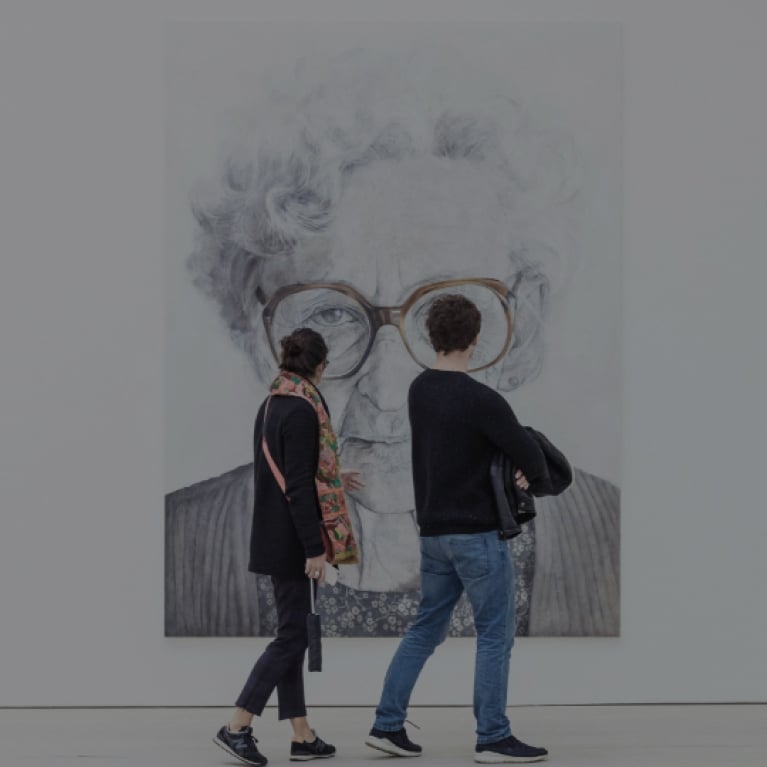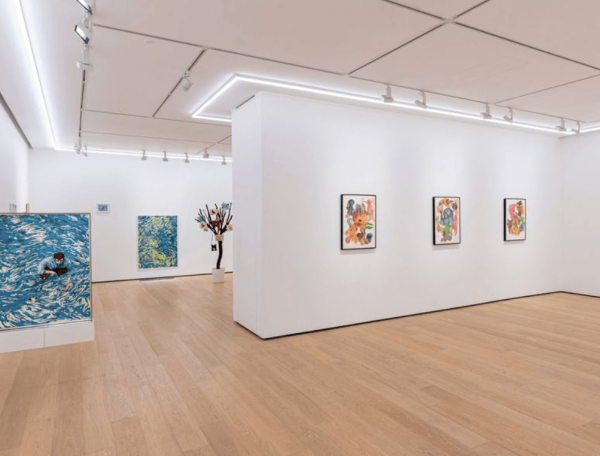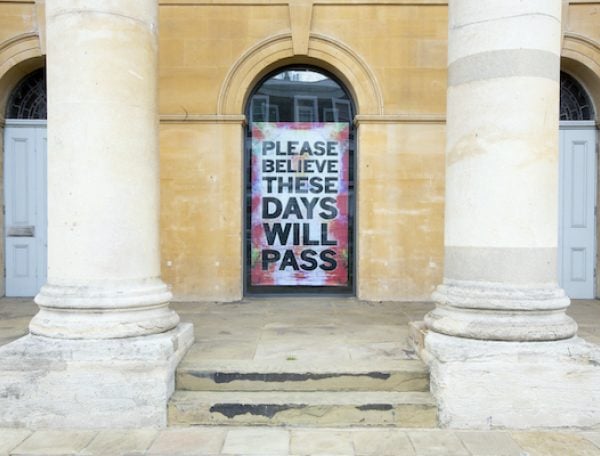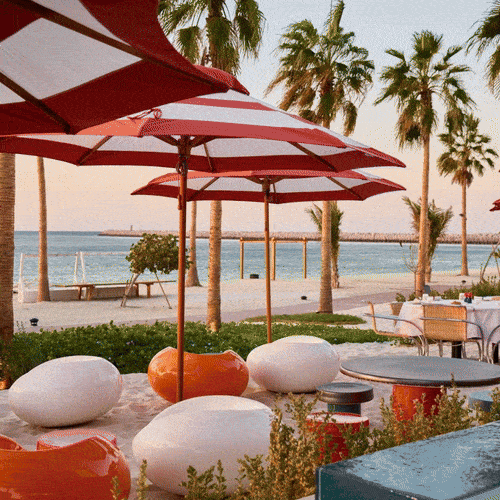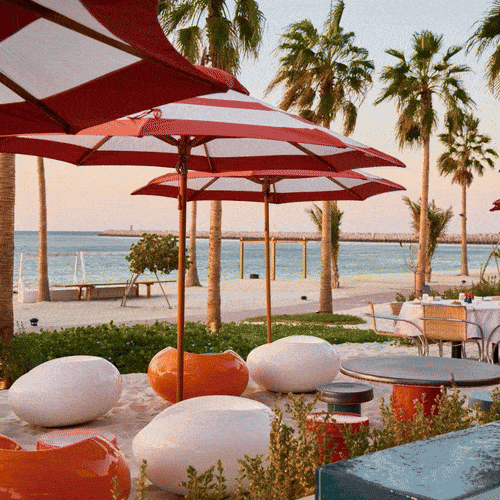Art Basel Miami Beach is always a blast. Now in its 22nd year, there’s so much to explore beyond the fair – like the US premiere of The Great Yes, The Great No, a multimedia performance created and directed by renowned South African artist William Kentridge. Or Lightfall, a new multisensory installation for Art Week by Studio Lemercier. But 4th–8th December is really about Art Basel. So, our Art Specialist, Bojana Popovic, has selected nine works from this year’s fair that you can’t leave without seeing.
Lally, 2024 by Sarah Ball
Stephen Friedman Gallery
Sarah Ball’s portraits celebrate self-expression, focusing on distinctive facial features, hairstyles, clothing, jewellery, and makeup. This portrait depicts a close friend (Lally) who is passionate about fashion and folk archiving, shown here in a confident contrapposto pose. Though elements like a red beaded necklace and floral waistcoat suggest personal context, Ball withholds further narrative details, titling the works only with the subject’s preferred name. This approach, influenced by Dutch portraiture and contemporary film, creates a timeless quality, inviting viewers to interpret the subjects beyond what is immediately visible.
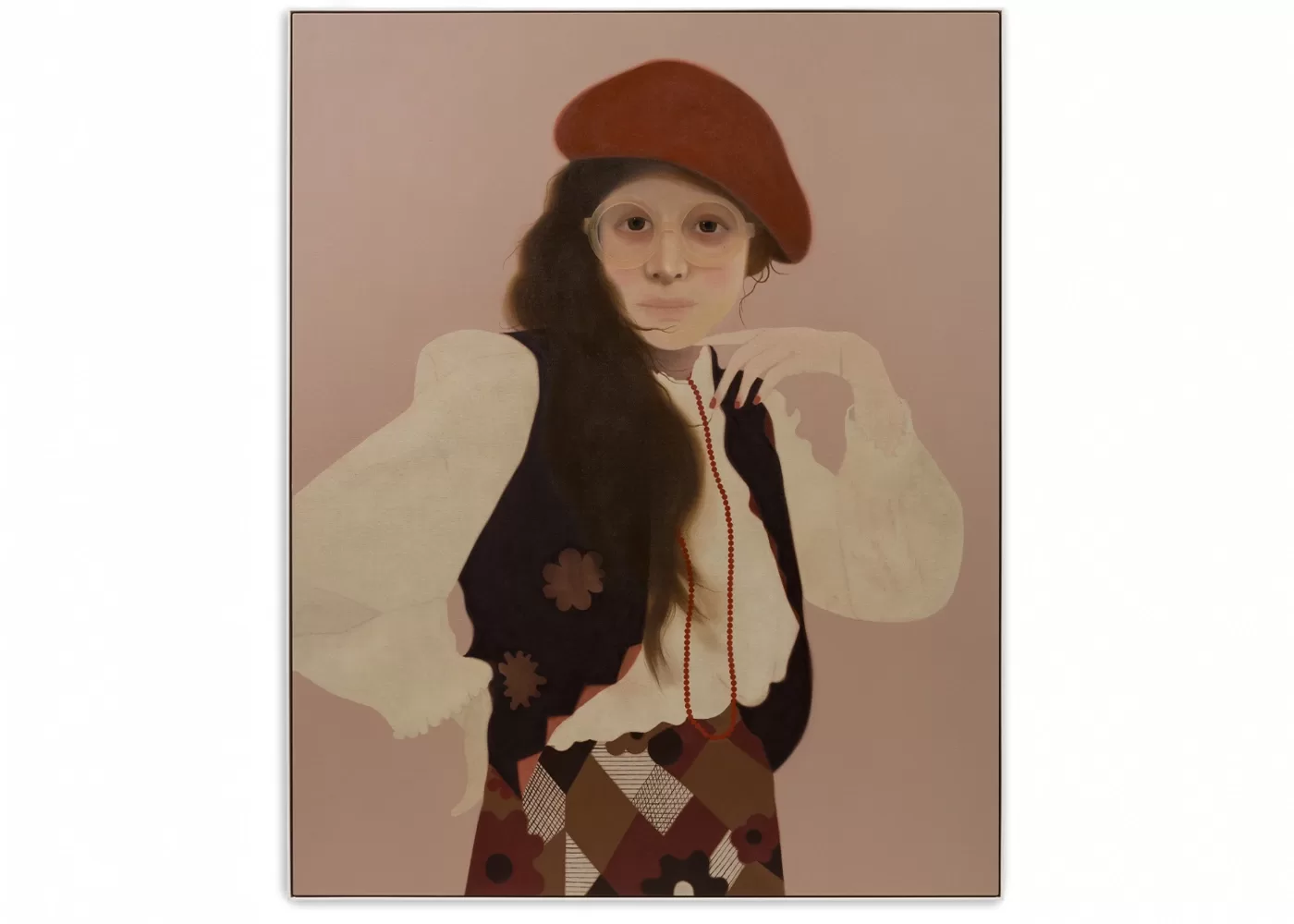
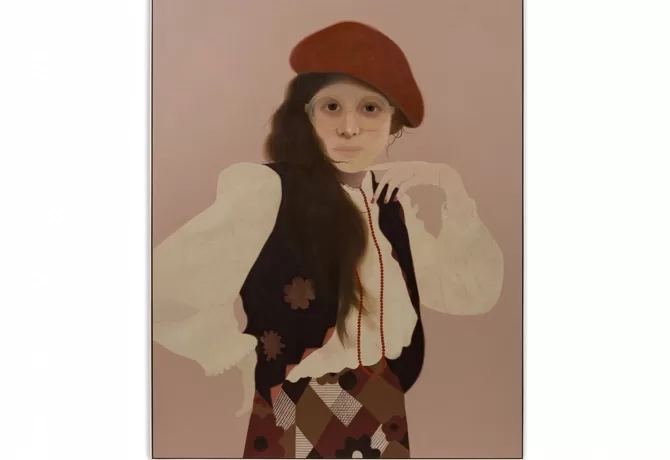
Sarah Ball, Lally, 2024. Image courtesy of Stephen Friedman Gallery.
Grasshoppers, 2024 by Soumya Netrabile
Anat Ebgi Gallery
Soumya Netrabile is a Chicago-based artist whose work blends traditional Indian art forms with contemporary sensibilities – marrying her heritage with her artistic training. Netrabile often incorporates elements of nature, mythology, and folklore into her artwork, creating pieces that are both visually striking and conceptually rich. Her distinctive style has garnered attention in the art world, establishing her as a promising voice in the global art scene. Over the past two years, she has had solo shows from Chicago and New York to LA and South Korea – certainly one to watch.
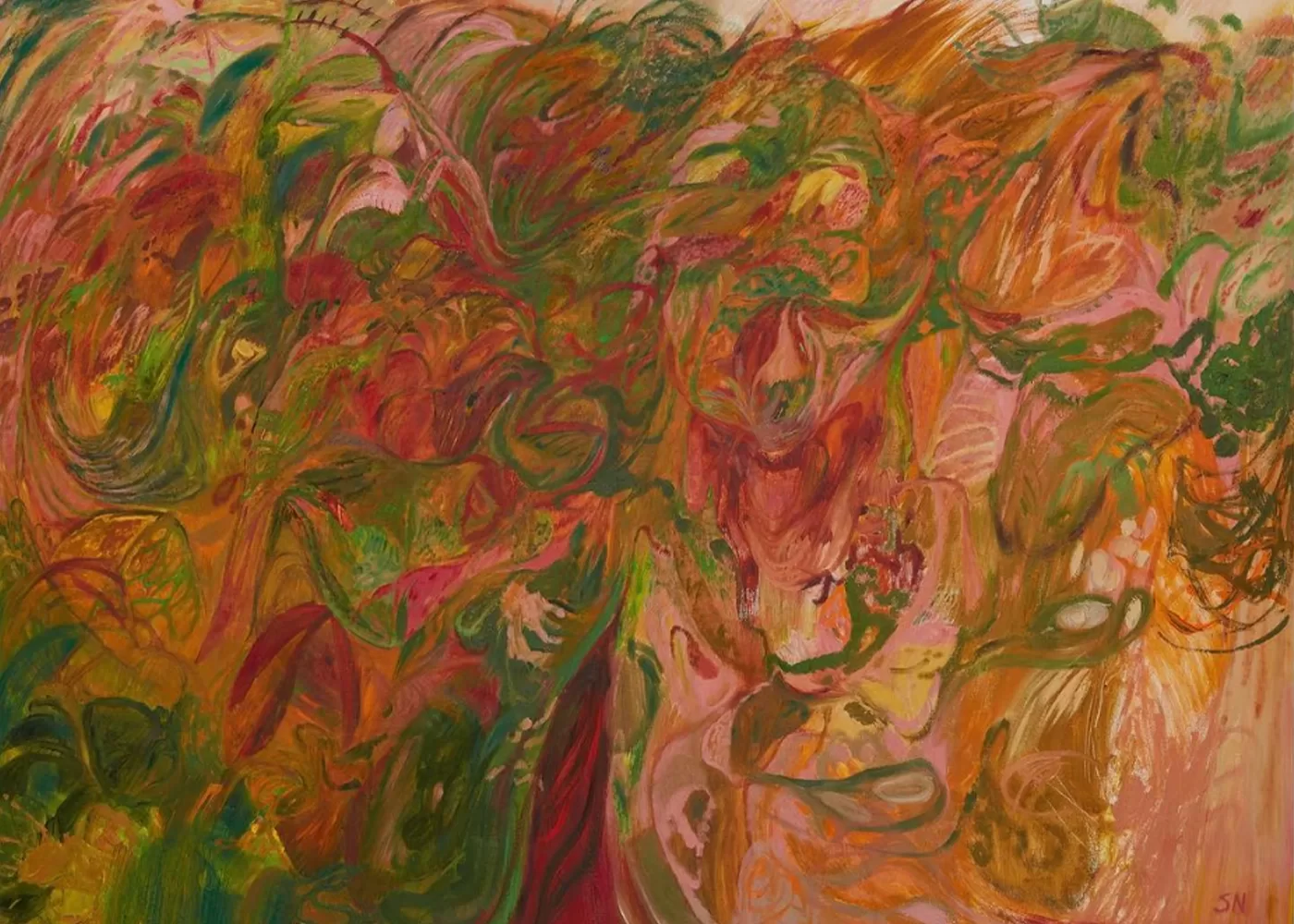
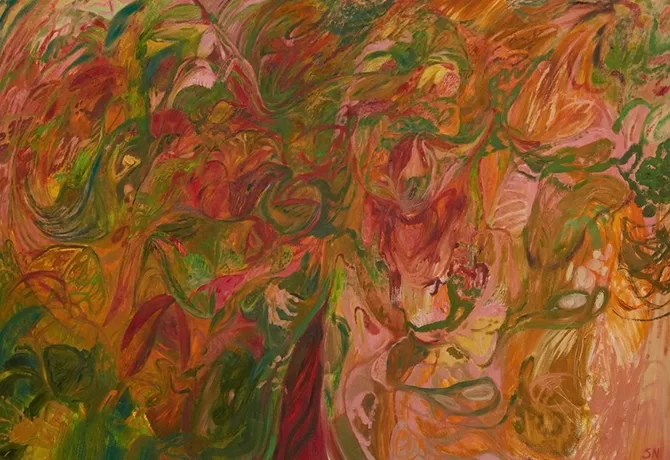
Soumya Netrabile, Grasshoppers, 2024. Image courtesy of Anat Ebgi Gallery.
Freischwimmer 233, 2021 by Wolfgang Tillmans
David Zwirner
Wolfgang Tillmans is a groundbreaking German artist known for his diverse, innovative approach to photography. His Freischwimmer series, started in the early 2000s, explores abstraction and the materiality of the photographic medium. Through distortion and physical manipulation, Tillmans creates fluid, abstract compositions where the lines between photography and painting blur. These works highlight his interest in transforming the photographic image to convey emotion and atmosphere. This rare example on David Zwirner’s stand is particularly striking, with stunning blush pink and tangerine tones that enhance its visual impact.
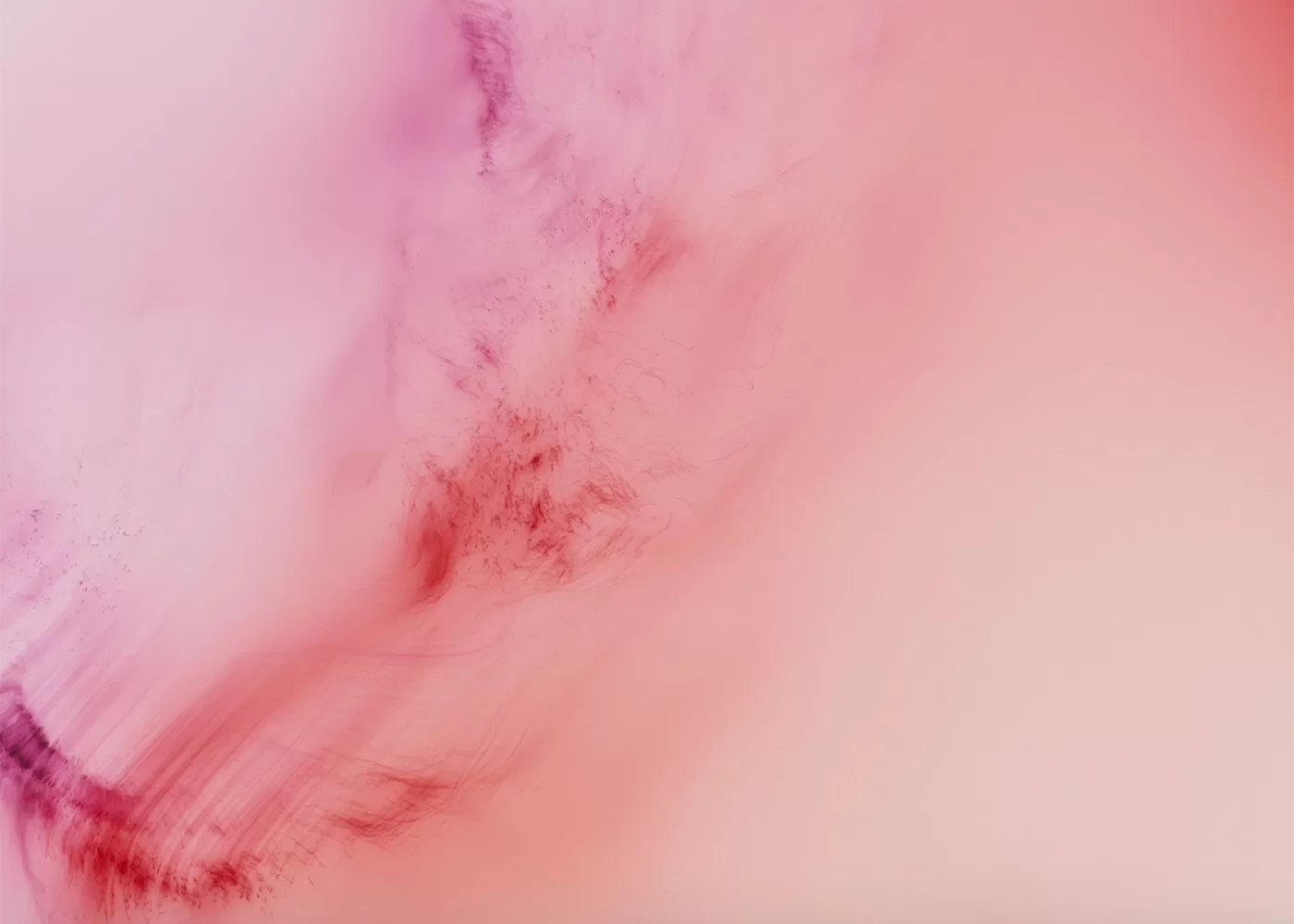
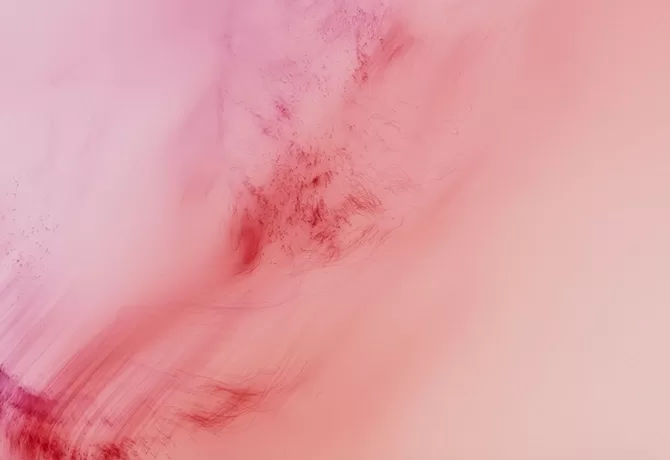
Wolfgang Tillmans, Freischwimmer 233, 2021. Image courtesy of David Zwirner Gallery.
Untitled, c. 1958 by Joan Mitchell
Pace Gallery
Joan Mitchell painted Untitled (c. 1958) during a pivotal phase in her career: when her creative style gained recognition. Her earlier frenetic brushstrokes evolved into sweeping arcs and powerful gestures. In Untitled, bold, olive-green strokes mingle with vibrant jewel tones, set against a balanced white background. White, essential to Mitchell, established the relationship between figure and ground. Influenced by both French Impressionism and Abstract Expressionism, Mitchell’s confidence and independence during this period paved the way for her later, more immersive engagement with the French countryside in her work.
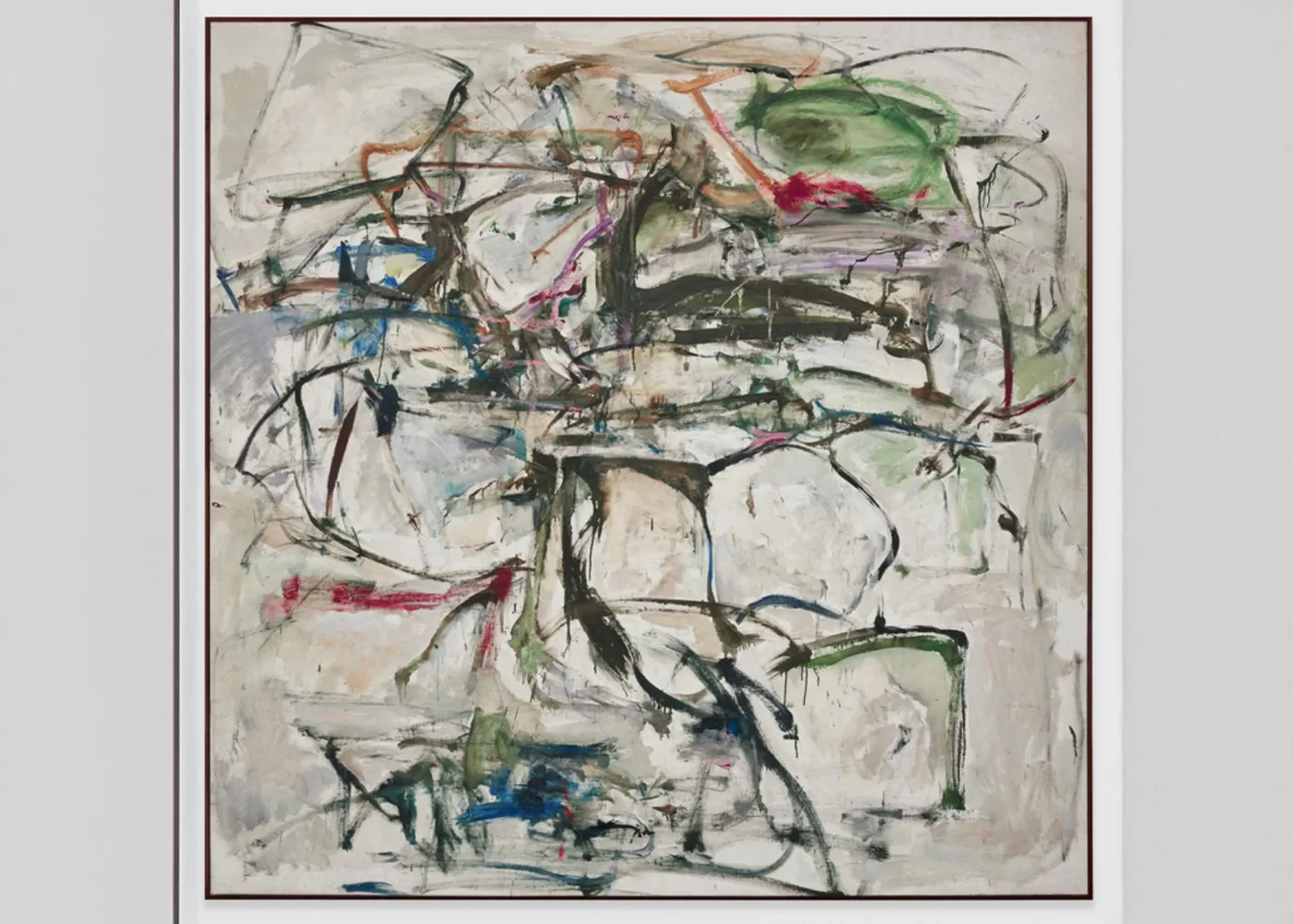
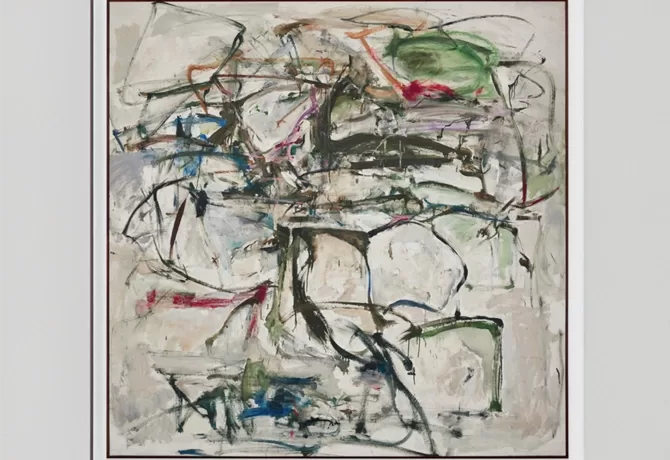
Joan Mitchell, Untitled, c.1958. Image courtesy of Pace Gallery.
Infinity-Nets XSHTQ, 2017 by Yayoi Kusama
David Zwirner
Yayoi Kusama's Infinity Nets paintings are iconic works that explore infinity, repetition, and the cosmos. These intricate, net-like patterns expand across vast canvases, creating a hypnotic, boundless effect. Built from countless repetitive brushstrokes, the nets reflect Kusama’s struggles with mental health, particularly hallucinations and obsessive thoughts. Seen as a visual manifestation of infinity, the series represents interconnectedness and self-obliteration. The Infinity Nets are key to understanding Kusama’s broader artistic vision and laid the foundation for her later immersive installations and polka-dot motifs, establishing her as a pioneering figure in avant-garde art.
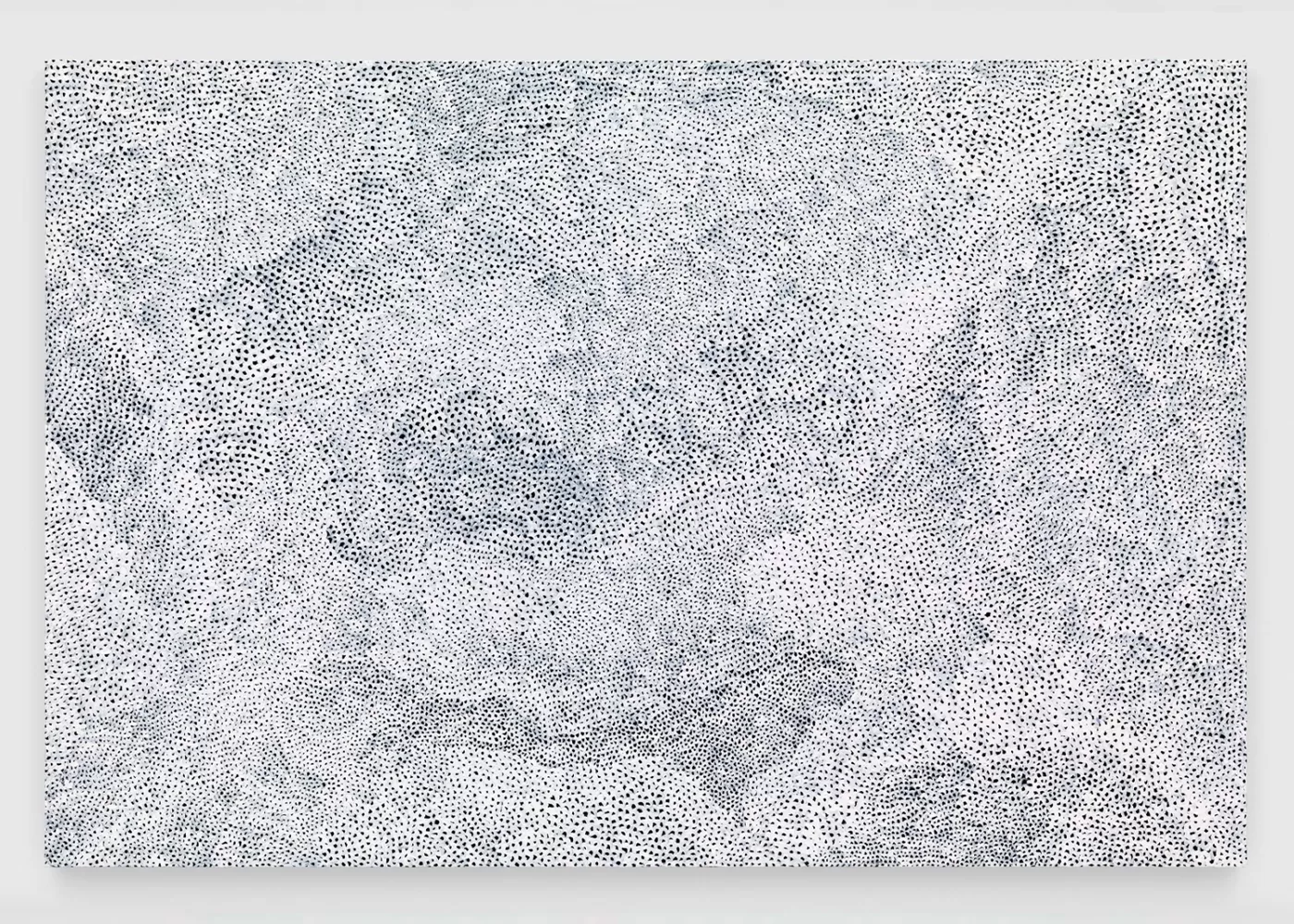
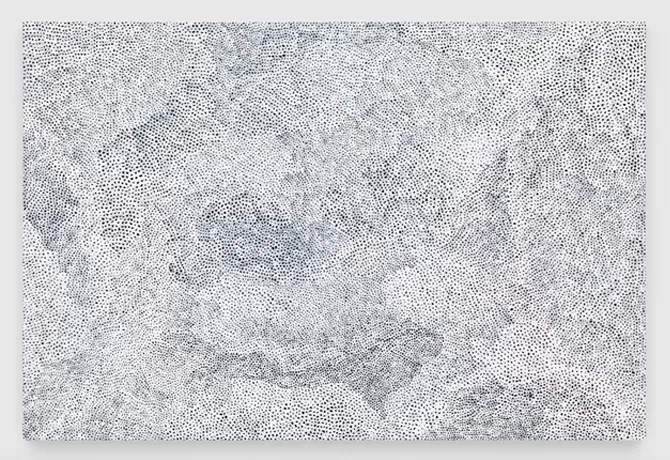
Yayoi Kusama, Infinity-Nets XSHTQ, 2017, image courtesy of David Zwirner Gallery.
Life in a Pile of Compost I, 2024 by Marguerite Humeau
White Cube
Marguerite Humeau is a French artist known for blending sculpture, sound, and immersive installations to explore biology, technology, and the human-non-human intersection. In addition to her participation in the Gwangju Biennale, she will open a solo exhibition at ICA Miami on 3rd December 2024, titled sk/ey-. This marks her first large-scale US institutional presentation. At Art Basel Miami Beach, Humeau will present a sculpture and her work on paper Life in a Pile of Compost I, showcasing the rich depth of her practice with stunning purples and crimsons.
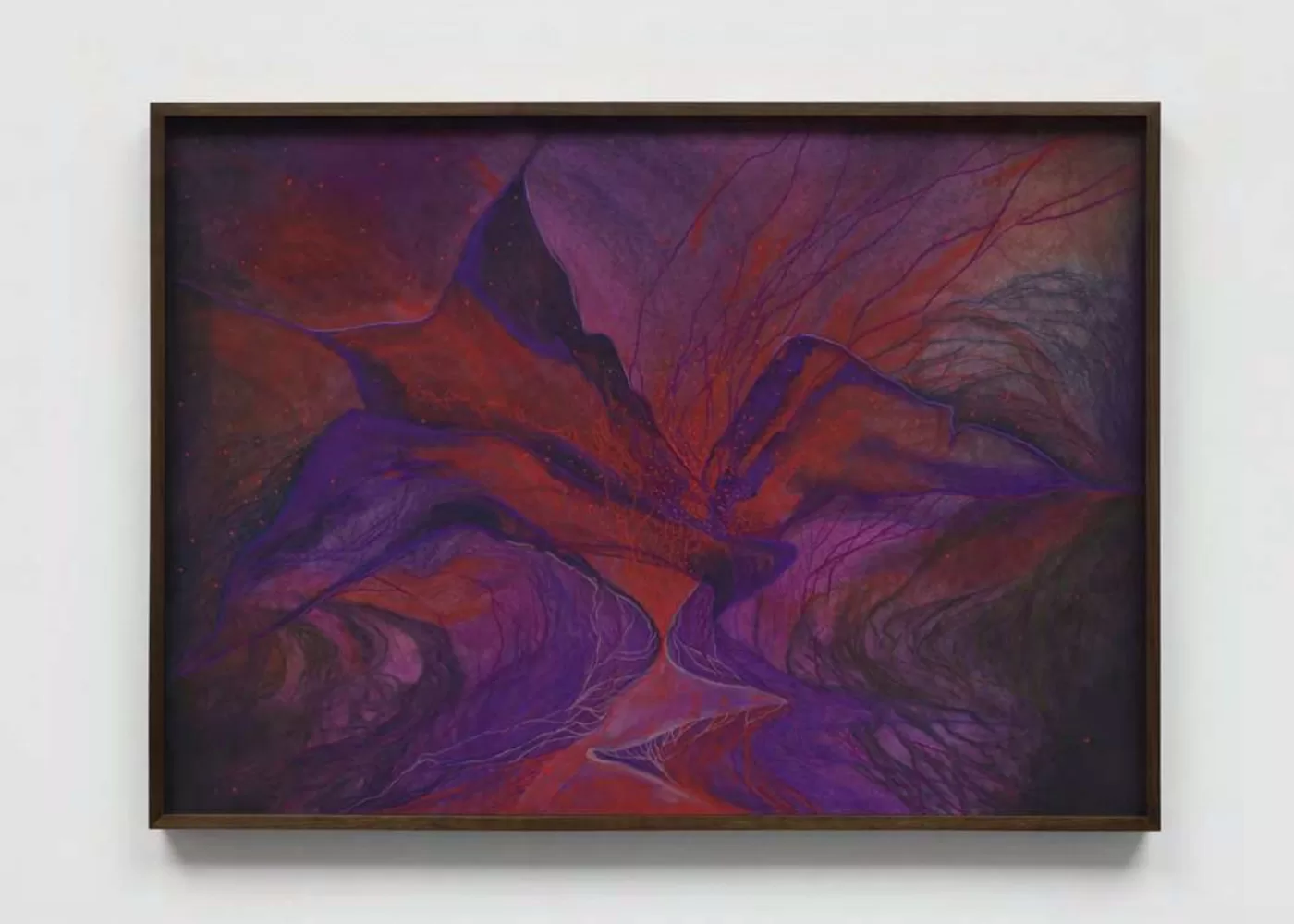
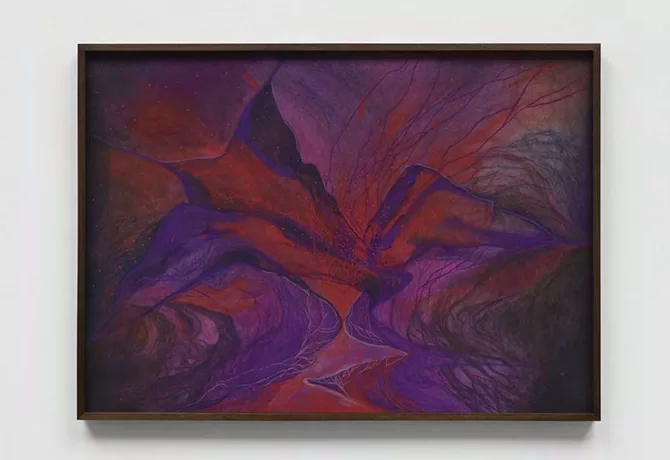
Marguerite Humeau, Life in a Pile of Compost I, 2024. Image courtesy of White Cube.
Empire State with Bowler, Mirrored, 1997 by Barry Flanagan
Max Hetzler
Barry Flanagan was a British sculptor known for his iconic hare sculptures, often depicted in dynamic, playful poses like leaping or dancing. Made in various materials, including bronze, his hares combine whimsy with themes of freedom, movement, and nature. The exaggerated, fluid poses convey energy, joy, and physicality. This pair of colossal sculptures features Flanagan’s signature hare motif, balancing on top of the Empire State Building, capturing the essence of his exploration of form, balance, and expression.
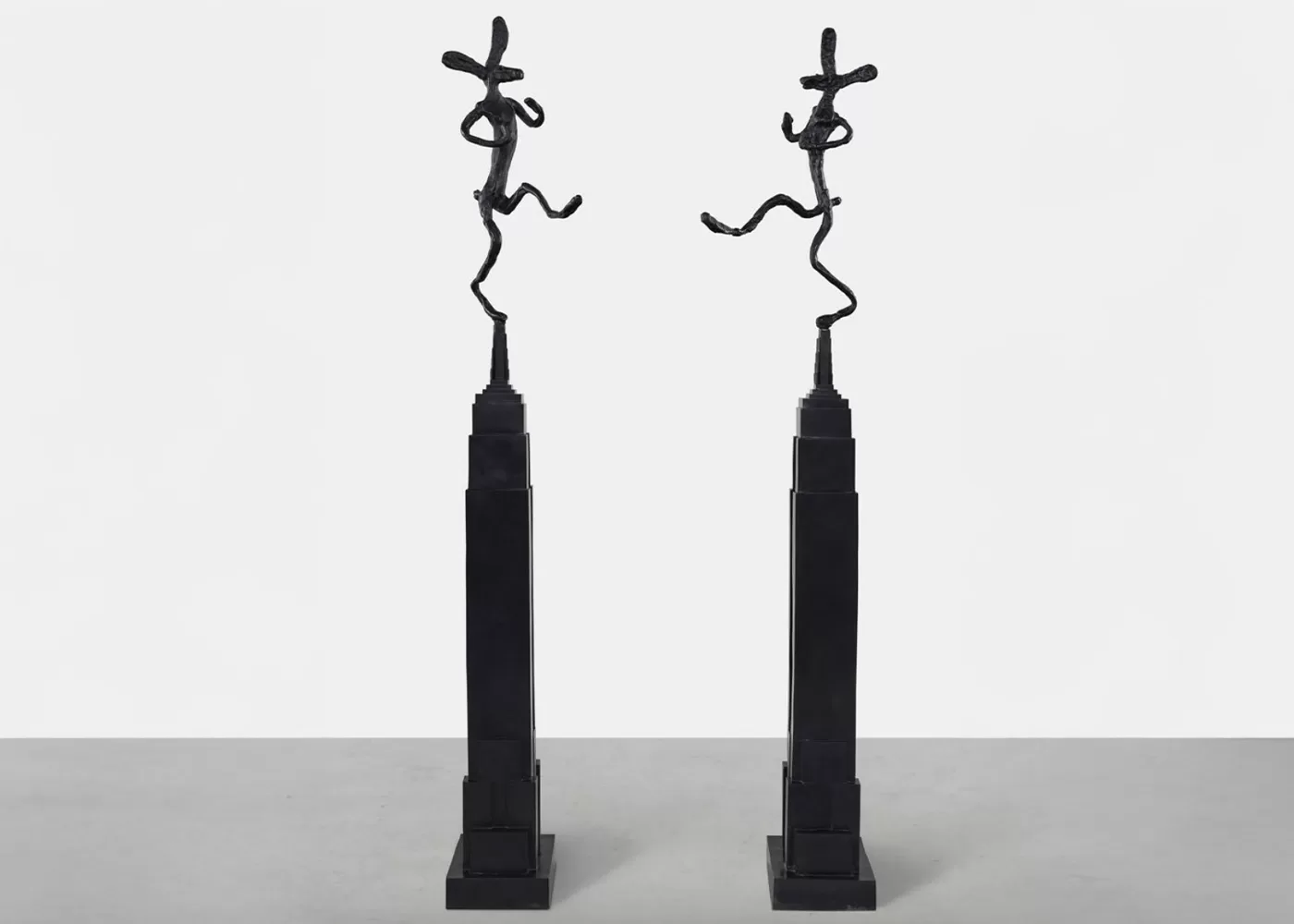

Barry Flanagan, Empire State with Bowler, Mirrored, 1997. Image courtesy of Max Hetzler Gallery.
Tomato/Knife, 1989 by Robert Mapplethorpe
Alison Jacques Gallery
Robert Mapplethorpe, renowned for his provocative black-and-white photography, explored themes of beauty, sexuality, and the human form. His still-life images, including Tomato/Knife, exemplify his meticulous attention to form, texture, and light. In Tomato/Knife, the stark contrast between the knife's sharp, gleaming surface and the ripe tomato creates a striking composition, highlighting Mapplethorpe's mastery of object photography. Through these images, he elevated everyday objects to fine art, imbuing them with emotional intensity and visual power.
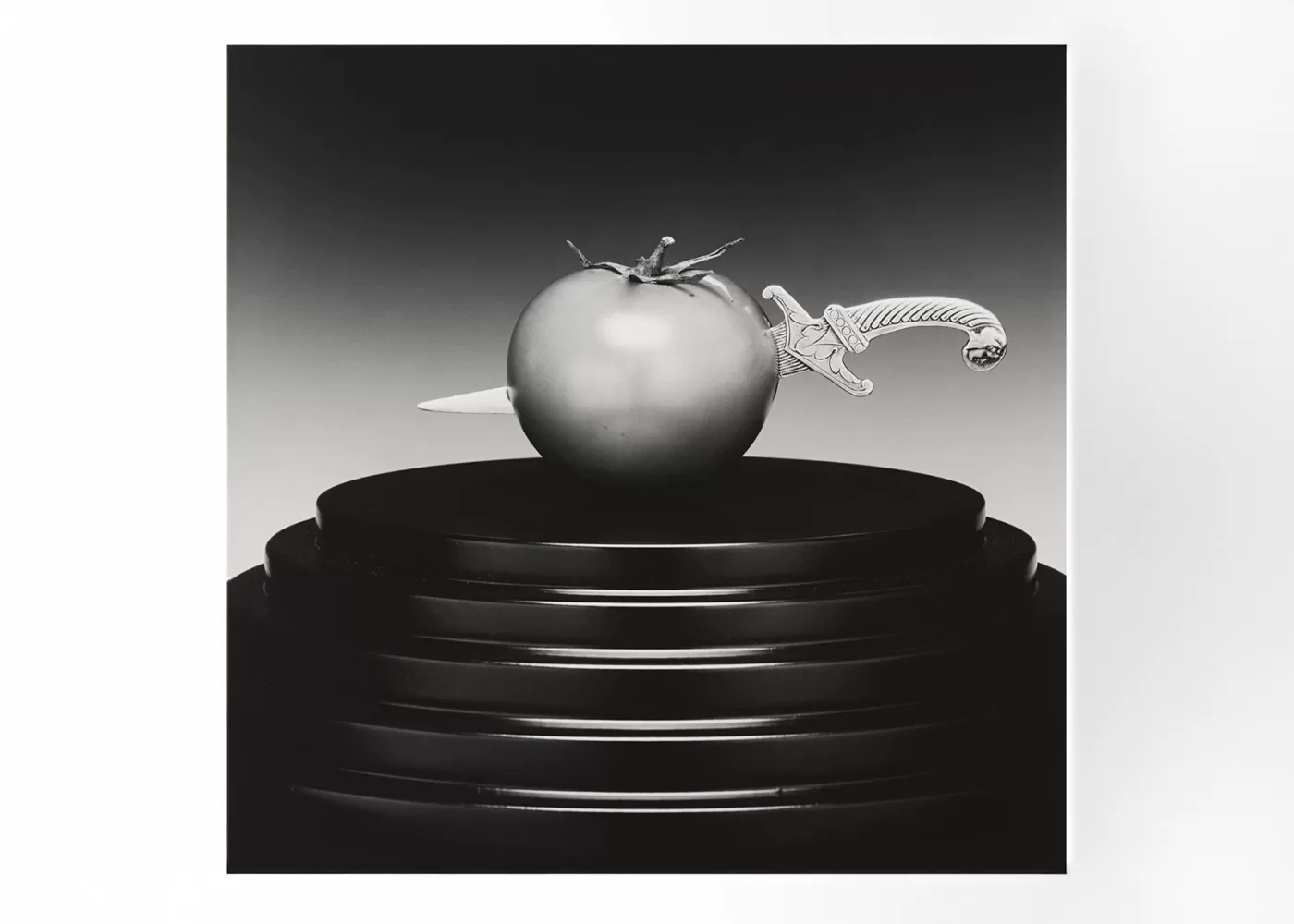
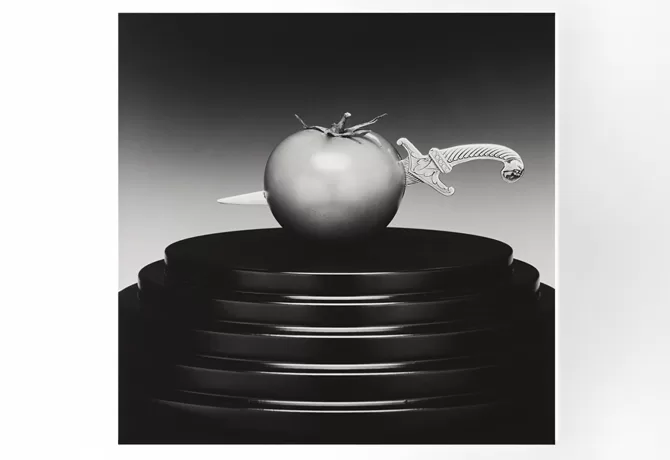
Robert Mapplethorpe, Tomato/Knife, 1989. Image courtesy of Alison Jacques Gallery.
Ebony In Ivory III, 2023 and Ebony In Ivory II, 2023 by Esmaa Mohamoud
Roberts Projects
Esmaa Mohamoud’s multidisciplinary approach, which blends sculpture and installation, explores the contrasting ideas of the monolithic and the multitude to offer new perspectives on Blackness. Her solo exhibition COMPLEX DREAMS is currently on display at the MSU Broad Art Museum as part of the inaugural Signature Commission Series, which invites renowned international artists to create works in response to the museum's striking architecture designed by Zaha Hadid. The two beautiful busts on view at Roberts Projects’ stand demonstrate the artist’s mastery of the sculpted medium.
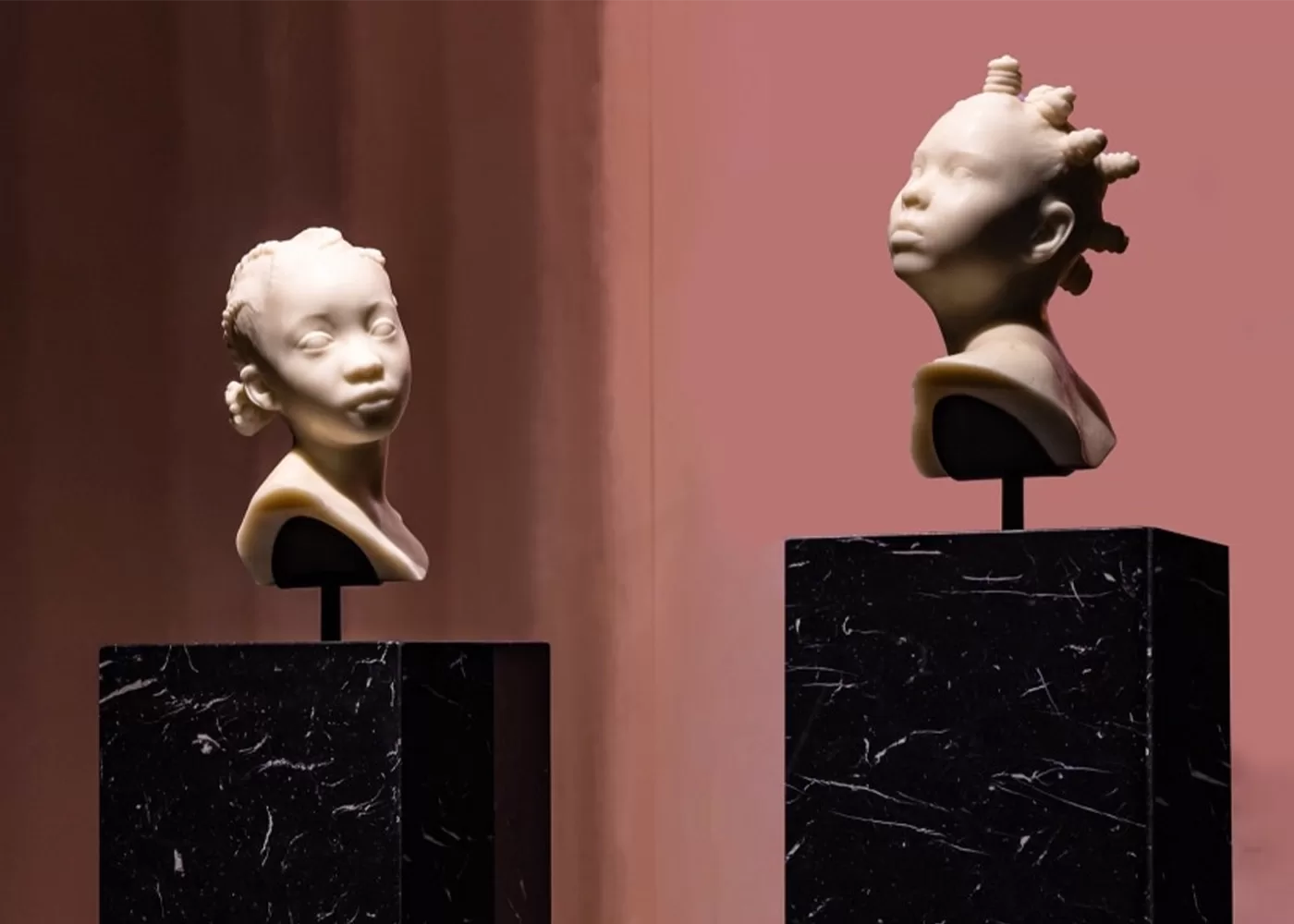
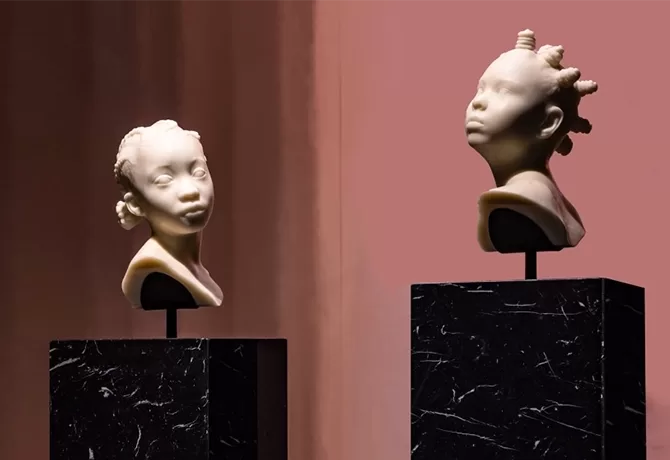
Esmaa Mohamoud, Ebony In Ivory III, 2023 and Ebony In Ivory II, 2023. Image courtesy of Roberts Projects.
A Quintessentially membership gets you into a suite of exclusive events and experiences around Art Basel Miami Beach – from the VIP preview to Ocean Drive’s Art of the Party.

